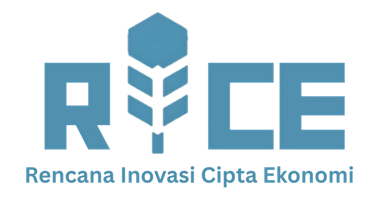Mastering the Future of Cost: How AI Will Redefine Financial Management in Complex Ecosystems
This article details AI's role in proactive cost control, risk mitigation, and strategic decision-making for sustainable growth.
TECHNOLOGY
Rice AI (Ratna)
10/13/20259 min read


The landscape of financial management is on the cusp of an unprecedented transformation, driven by the pervasive capabilities of Artificial Intelligence (AI). For industry experts and professionals navigating increasingly intricate global business ecosystems, understanding and leveraging AI is no longer optional; it is the strategic imperative for mastering future costs and ensuring sustainable growth. This deep dive explores how AI is not merely automating tasks but fundamentally redefining cost structures, risk management, and strategic financial decision-making in environments characterized by volatility, uncertainty, complexity, and ambiguity (VUCA).
Traditional financial models, designed for more predictable environments, struggle to provide the agility and foresight required today. AI introduces a paradigm shift, moving financial management from a reactive, historical reporting function to a proactive, predictive, and prescriptive strategic powerhouse. The true power of AI lies in its ability to process vast datasets, identify subtle patterns, and generate actionable insights that human analysis alone cannot achieve, fundamentally reshaping how organizations perceive, measure, and control costs within their complex operational frameworks.
The Evolving Landscape of Financial Management
The complexities of modern business demand more than just efficient accounting; they require granular visibility into costs, predictive capabilities for future expenditures, and the agility to adapt to rapid market changes. Existing methodologies often fall short, leaving organizations vulnerable to unforeseen expenses and missed optimization opportunities. The imperative for agility and foresight has never been greater.
Traditional Challenges and Their Limitations
Historically, financial management has relied on backward-looking data, often leading to reactive decision-making. Budgeting cycles are frequently rigid, failing to account for dynamic market shifts or emergent risks. Manual data aggregation and analysis are time-consuming and prone to human error, limiting the depth and speed of insights available to decision-makers. This often creates significant blind spots within complex operational ecosystems.
These limitations are particularly pronounced in multi-national corporations or highly integrated supply chains, where cost drivers are interconnected and opaque. Siloed departmental budgets and disparate data systems further exacerbate these challenges. Consequently, financial strategies can become bottlenecks, hindering innovation and responsiveness rather than empowering them.
The Imperative for Agility
In today's fast-paced global economy, organizations need financial systems that can respond to change in real-time. Agility in financial management means the ability to rapidly reallocate resources, adjust spending forecasts, and identify cost-saving opportunities as they emerge, not months after the fact. This agility is crucial for maintaining competitive advantage and navigating economic volatility effectively.
Without it, businesses risk overspending on declining initiatives or under-investing in emerging opportunities. The transition from static annual budgets to dynamic, AI-driven financial models offers the flexibility necessary for strategic adaptation. This shift empowers finance leaders to become true strategic partners, providing continuous value rather than merely reporting past performance.
Redefining Value Creation
AI’s impact extends beyond mere cost reduction; it fundamentally redefines how value is created and captured. By enabling more precise cost attribution and predictive modeling, AI allows organizations to optimize resource deployment towards initiatives with the highest strategic return. This precision transforms financial management from a necessary overhead into a core driver of business growth and innovation.
Moreover, AI facilitates a deeper understanding of the total cost of ownership across product lifecycles and customer journeys. This holistic view reveals previously hidden cost drivers and unlocks new avenues for value creation through enhanced efficiency, improved product offerings, and superior customer experiences. The focus shifts from simply cutting costs to intelligently investing for maximum impact.
AI's Foundational Pillars in Cost Redefinition
AI brings a suite of powerful capabilities that form the bedrock of next-generation financial management. These pillars—predictive analytics, anomaly detection, automated decision support, and optimized resource allocation—work synergistically to provide unparalleled insights and control over an organization's financial health. Each capability addresses a critical area of cost management with superior precision and speed.
Predictive Analytics for Proactive Cost Control
One of AI's most profound contributions is its ability to forecast future costs with remarkable accuracy. Leveraging machine learning algorithms, AI can analyze historical data, market trends, macroeconomic indicators, and even unstructured data like news reports to predict future expenses. This move from descriptive to predictive analytics empowers organizations to anticipate cost fluctuations long before they materialize.
For example, AI models can forecast raw material price changes, labor costs, or energy consumption patterns based on complex interacting variables. This foresight allows finance teams to proactively adjust purchasing strategies, hedge against price volatility, and optimize operational plans. It transforms budgeting into a dynamic, forward-looking exercise, significantly reducing financial surprises.
Anomaly Detection for Risk Mitigation
AI excels at identifying unusual patterns or deviations from expected behavior that may signify financial anomalies, fraud, or operational inefficiencies. By continuously monitoring transactions, spending patterns, and system logs, AI algorithms can flag suspicious activities in real-time. This capability is invaluable in complex ecosystems where manual review of every transaction is impossible.
Early detection of anomalies, whether it's an unusual spike in a particular expense category or an unapproved vendor payment, allows organizations to investigate and mitigate risks rapidly. This not only prevents potential financial losses but also strengthens internal controls and compliance frameworks. AI acts as a vigilant guardian, protecting financial integrity across the entire operational footprint.
Automated Decision Support and Scenario Planning
Beyond prediction, AI empowers better decision-making by providing automated insights and facilitating advanced scenario planning. AI-powered tools can simulate the financial impact of various strategic choices, such as launching a new product, entering a new market, or implementing a new technology. This capability allows leaders to evaluate potential outcomes before committing resources.
By running thousands of simulations based on different variables and assumptions, AI provides a comprehensive understanding of the risks and opportunities associated with each scenario. This objective, data-driven approach enhances strategic planning, making financial decisions more robust and resilient. It moves decision-making from intuition to informed foresight.
Optimizing Resource Allocation and Spend
AI-driven systems can analyze operational data to identify inefficiencies in resource utilization and spending across departments and projects. By understanding where and how capital, labor, and assets are consumed, AI can recommend optimal allocation strategies. This ensures that resources are directed to areas that yield the highest strategic value and operational efficiency.
For instance, AI can optimize energy consumption in facilities, fine-tune logistics routes to reduce fuel costs, or identify redundant software subscriptions. This continuous optimization leads to significant cost savings and improved operational performance. The focus shifts from merely tracking expenditure to actively shaping efficient resource deployment.
Navigating Complex Ecosystems with AI
Complex ecosystems, characterized by interconnected global operations, dynamic market forces, and intricate regulatory frameworks, present unique challenges for cost management. AI provides the essential tools to untangle these complexities, offering granular visibility and control where traditional methods falter. It is particularly impactful in areas like supply chain, cloud spend, and regulatory compliance.
Supply Chain Cost Optimization
Global supply chains are notoriously complex, with numerous variables influencing costs, from raw material prices and logistics to tariffs and geopolitical events. AI can analyze vast amounts of data from suppliers, transporters, inventory levels, and demand forecasts to optimize every stage of the supply chain. This leads to significant reductions in procurement, logistics, and inventory holding costs.
Predictive analytics can anticipate disruptions, allowing for proactive adjustments to avoid costly delays or stockouts. AI can also identify optimal sourcing strategies, negotiate better terms with suppliers by leveraging real-time market data, and streamline warehousing operations. The result is a more resilient, efficient, and cost-effective supply chain, crucial for profitability in a globalized economy.
Cloud Spend Management
As businesses increasingly rely on cloud infrastructure, managing associated costs becomes a critical challenge. Cloud environments are dynamic, with usage fluctuating based on demand, leading to unpredictable and often spiraling expenses. AI solutions can monitor cloud resource consumption in real-time, identify underutilized services, and recommend optimal scaling strategies.
AI can automate the detection of idle resources, suggest rightsizing instances, and provide cost allocation insights across different departments or projects. This ensures that organizations only pay for what they truly need, eliminating wasteful cloud spending. Effective cloud spend management, empowered by AI, is vital for maintaining cost efficiency in a digital-first operating model.
Regulatory Compliance and Governance Costs
Navigating the labyrinth of global regulations carries significant compliance costs, including legal fees, audit expenses, and the risk of penalties. AI can dramatically reduce these costs by automating the monitoring of compliance requirements, identifying potential violations, and streamlining reporting processes. Natural Language Processing (NLP) can even analyze regulatory texts to highlight relevant changes.
AI-powered systems can continuously scan transactions and activities to ensure adherence to financial regulations like GDPR, SOX, or industry-specific standards. This proactive approach minimizes the risk of non-compliance, which can lead to hefty fines and reputational damage. By reducing the manual effort involved, AI frees up compliance teams to focus on more strategic risk management.
Cross-Functional Cost Visibility
One of the biggest hurdles in complex organizations is the lack of unified cost visibility across different departments, projects, and regions. AI breaks down these data silos by integrating information from disparate systems (ERP, CRM, HR, IoT) into a single, cohesive financial intelligence platform. This provides a holistic, 360-degree view of all costs.
With integrated cost data, finance leaders can understand the true cost drivers behind every product, service, or customer segment. This cross-functional insight enables more informed strategic decisions, facilitates better resource allocation, and identifies opportunities for synergistic cost savings that were previously invisible. AI creates a single source of truth for financial performance.
Implementing AI for Strategic Financial Advantage
Successfully integrating AI into financial management requires a strategic approach that addresses data infrastructure, talent development, and a clear roadmap for adoption. It’s not merely about purchasing AI tools but about orchestrating a holistic transformation that embeds intelligence into the very fabric of financial operations. This journey necessitates careful planning and execution to maximize ROI.
Data Infrastructure and Integration
The foundation of any effective AI strategy is robust, clean, and integrated data. Organizations must invest in modern data infrastructure capable of collecting, processing, and storing vast quantities of diverse financial and operational data. This often involves migrating from legacy systems, establishing data lakes, and implementing strong data governance policies.
Integrating disparate data sources, both internal and external, is paramount. AI models are only as good as the data they consume. Therefore, ensuring data quality, consistency, and accessibility across the enterprise is a critical first step. Without a solid data foundation, AI implementations will struggle to deliver meaningful insights.
Talent Upskilling and Change Management
The introduction of AI will reshape the roles of finance professionals. Rather than replacing human expertise, AI augments it, shifting responsibilities from routine data entry and analysis to more strategic, interpretative, and advisory functions. Therefore, upskilling the existing finance workforce is essential. Training programs should focus on data literacy, AI concepts, and how to effectively utilize AI tools.
Change management strategies are also crucial to ensure a smooth transition and secure employee buy-in. Communicating the benefits of AI, addressing concerns about job displacement, and demonstrating how AI can empower professionals will foster a culture of adoption. Finance professionals will become "AI-savvy," focusing on interpreting insights and driving strategic value.
Phased Adoption and ROI Measurement
Implementing AI should be approached in a phased manner, starting with pilot projects in areas with clear business cases and measurable ROI. This iterative approach allows organizations to learn, refine models, and demonstrate tangible value early on, building momentum for broader adoption. Clearly defined KPIs for cost savings, efficiency gains, and improved decision accuracy are vital for tracking success.
Measuring the return on investment (ROI) for AI initiatives is crucial for securing continued executive support and funding. This includes not only direct cost reductions but also indirect benefits such as enhanced risk mitigation, improved forecast accuracy, and increased strategic agility. A pragmatic, data-driven approach to implementation ensures sustainable success.
For organizations seeking to navigate these complexities, platforms like Rice AI offer specialized, end-to-end solutions designed to streamline this integration. Rice AI’s modular architecture allows for seamless integration with existing financial systems, providing predictive analytics, anomaly detection, and automated reporting tailored to complex ecosystems. Their expertise ensures businesses can unlock unprecedented cost efficiencies without extensive internal development, transforming financial challenges into strategic advantages.
The Future of the Finance Professional in an AI-Driven World
The advent of AI heralds a new era for finance professionals, transforming their roles from meticulous record-keepers to strategic architects. This shift is not about obsolescence but evolution, demanding new skill sets and a redefined focus on higher-value activities. The future finance team will be characterized by analytical prowess, strategic foresight, and ethical stewardship.
Shifting from Transactional to Strategic Roles
With AI automating routine and repetitive tasks like data entry, reconciliation, and basic reporting, finance professionals are freed to concentrate on strategic initiatives. Their roles will involve interpreting AI-generated insights, developing complex financial models, providing strategic business partnering, and leading digital transformation efforts. This elevates finance from a support function to a central strategic driver.
The future finance professional will act as an internal consultant, leveraging AI to advise on growth strategies, M&A activities, risk management frameworks, and capital allocation decisions. This requires a deeper understanding of business operations, market dynamics, and the strategic implications of financial data, moving beyond mere numbers to actionable narratives.
Ethical Considerations and Responsible AI
As AI becomes more integrated into financial management, ethical considerations and responsible AI practices become paramount. Issues such as data privacy, algorithmic bias, transparency in decision-making, and accountability for AI-driven financial outcomes must be meticulously addressed. Organizations must establish clear governance frameworks for AI use.
Ensuring that AI models are fair, unbiased, and auditable is crucial, especially when financial decisions impact individuals or large groups. The finance professional will play a key role in advocating for and implementing ethical AI principles, maintaining trust, and navigating the societal implications of AI-driven finance. This stewardship is essential for long-term viability and public confidence.
Conclusion
The convergence of AI and financial management represents a monumental shift, fundamentally redefining how costs are controlled, risks are mitigated, and value is created in complex ecosystems. Organizations that embrace this transformation will gain unparalleled strategic advantage, moving beyond reactive accounting to proactive, predictive financial intelligence. AI empowers finance leaders to navigate volatility with confidence, optimize resource allocation with precision, and drive sustainable growth in an ever-evolving global market. The future of cost management is intelligent, integrated, and relentlessly optimized.
Embracing AI is not merely an upgrade to existing systems; it is a strategic imperative for long-term resilience and competitive differentiation. By leveraging AI's capabilities for predictive analytics, anomaly detection, and automated decision support, businesses can transform their financial operations into a powerful engine for innovation and value creation. The journey to mastering future costs begins now, by investing in intelligent solutions and fostering a culture of data-driven financial stewardship. For those ready to lead this transformation, platforms like Rice AI provide the necessary tools and expertise, ensuring a smooth transition to an AI-powered financial future. Take the first step towards a smarter, more agile financial future.
#AIFinance #CostManagement #FinancialTransformation #ComplexEcosystems #PredictiveAnalytics #FinancialModeling #DigitalFinance #AICostOptimization #StrategicFinance #FutureOfFinance #Fintech #BusinessIntelligence #RiceAI #EnterpriseAI #FinancialInnovation #DailyAITechnology
RICE AI Consultant
To be the most trusted partner in digital transformation and AI innovation, helping organizations grow sustainably and create a better future.
Connect with us
Email: consultant@riceai.net
+62 822-2154-2090 (Marketing)
© 2025. All rights reserved.


+62 851-1748-1134 (Office)
IG: @riceai.consultant
